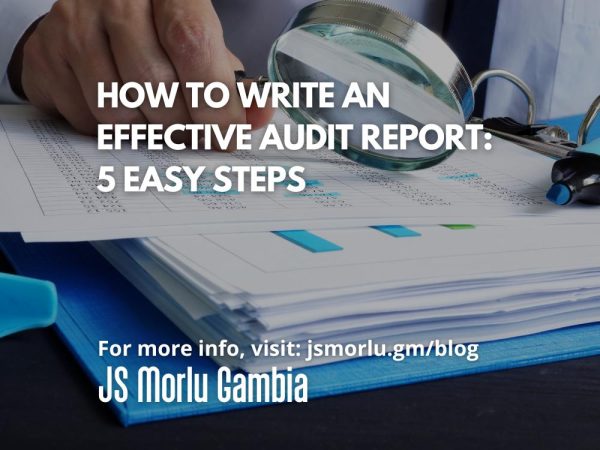1. Prepare yourself
Before getting started on any major project, you must first evaluate and plan for the activity before it takes place. During this stage, you will analyze strengths and weaknesses. You conduct research to get an idea of how this process should be executed. Finding accurate information is a gateway to supplying an efficient service.
2. Set the tone
After preparing your ideas, setting the tone for your audit report is the next crucial step. During the writing process, you should be considering the end product and the rating. For example, is your stance based on a Clean Opinion? The voice and statements of your report should match up with the claim you have chosen. Setting the tone for your audit report is important because it establishes quality, clarity, and feeling for the points you are trying to convey through writing.
3. Be clear and concise
The Institute of Internal Auditors mentions five components that are useful for making recommendations. They are known as the 5 C’s:
- Condition
- Criteria
- Cause
- Consequence
- Corrective Action
These are used as references for writing reports efficiently. Condition speaks to the problem that needs to be identified. Criteria refers to the standard that should be met. Cause explains why the issue occurred. Consequence is the impact. Corrective Action refers to the plan and recommendation.
You must get straight to the point and convey your idea thoroughly. Do your best to stay away from dense language, since this can be intimating and difficult to comprehend. Your client should not have to over-analyze your response in order to understand it. Be straightforward.
Following these steps will enhance your performance. Being clear and concise also requires that the display of your content is strategically organized. Citations, formatting, and indentations should be used accurately. Know the difference between Passive and Active speech. Refrain from using a passive voice, because it can be difficult to read. Instead, use an active voice instead. Generally, spell out any number that begins a sentence. Also, spell out any number below 10 in any part of your sentence, if the number is not attached to a measurement or label.
4. Consistent communication
There are five general stages included in report writing:
- Identification of the Audit Findings
- Preparations of the First Draft Report with the Audit Team
- Discussions Draft with the Audit Supervisor
- Exit Meeting & Formal Draft with the Client
- Final Report
All five stages follow the ABC Rule – Always Be Communicating. By following these steps, you will avoid surprises, while increasing efficiency.
5. The follow-up
The follow-up is an essential step that is often not implemented or discussed. It is done after the audit report has already been issued. Following up with your client is simply about ensuring that they followed through with all your instructions or recommendations.
Original Source: LinkedIn

